23+ Truck Driving Safety Tips – [Updated for 2023]
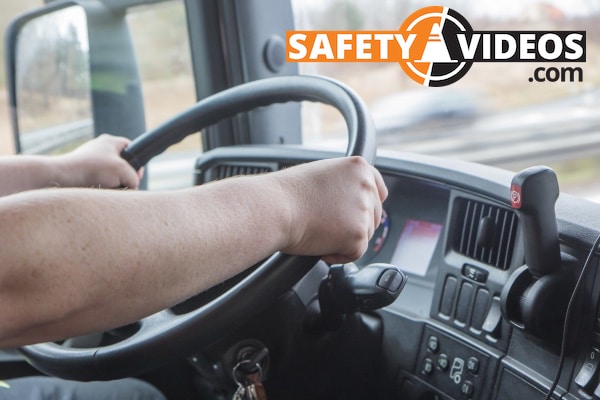
Truck driving is one of the most dangerous occupations. The trucking industry has over twice the average injury rate of all professions. So, how can truck drivers avoid accidents?
The government, companies, and drivers must work together to ensure driver safety. But truck drivers can help themselves and other drivers by being safety conscious.
While being a driver of large trucks will never be the safest profession, the safety tips below will help make this dangerous job a little less dangerous. These truck driving safety tips are a good complement to our training on cargo securement.
Tip #1: Remain Alert

All drivers of CMVs (commercial motor vehicles), like truck and bus drivers, must take a 30-minute break after 8 hours of driving and a 10-11 hour break between driving shifts.
This is the minimum, but truck drivers should be willing to take a break if they feel especially tired. Trucking companies should empower their truck drivers to take breaks when needed. Why? Because studies have shown that our alertness starts to dwindle when we are tired or need to rest.
Tip #2: Maintain Good Sleep Hygiene
The bunk in the back of a cab is no one’s idea of a five-star experience, but you can do some things to make sure you get a good night’s sleep.
Eye masks and ear plugs can help block out light and sound.
Try to keep a regular sleep schedule and go to bed at the same time every night. Investing in a pillow or blanket you like can also pay off in better sleep many times over.
Tip #3: Keep Your Body Healthy
Truck drivers can help improve their alertness by keeping their consumption of drugs and alcohol to a minimum. No one should drive high or drunk. But drugs and alcohol can also impair sleep and make it harder to get enough rest even after you are sober.
You can also improve your energy levels by making sure you eat a good diet and get exercise. It can be hard to do these things on the road, but you can try keeping raw fruit in your cab for snacks or taking a 10-minute walk around rest areas.

Tip #4: Drive Defensively as a Truck Driver
Many safety tips include defensive driving strategies. What does defensive driving mean?
It means understanding the risks of driving and proactively looking to minimize them. It also means understanding that while you can’t control the behavior of other drivers, you can control how you react to it.
While these rules apply to most motorists, it is especially important to follow them as a truck driver. With a larger vehicle comes greater responsibility. By the way, we do have a full article outlining everything there is to know about commercial vehicles that you should check out as well.
Tip #5: Follow the Speed Limit
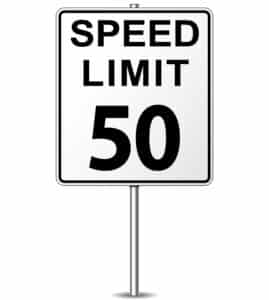
Following speed limits are an absolute must and the most basic of safety tips.
Speed limits for truck drivers are lower for a reason- trucks have bigger mass than cars and can cause more damage at slower speeds.
Slow down more than you think you need to for turns and curves. Even experienced truck drivers can be caught off guard on turns.
Tip #6: Always Check Your Blind Spots
Blind spots are a significant safety concern. No matter how long you’ve been driving a truck, it’s always a good safety suggestion to be more aware of your blind spots.
Tip #7: Wear Your Seat Belt
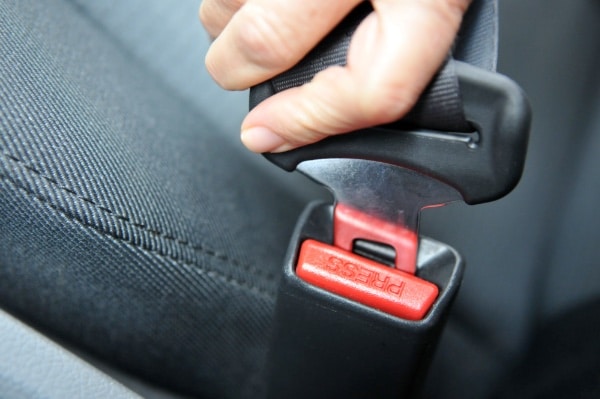
Put your seatbelt on before you start your truck. Don’t take your seatbelt off until after you’ve stopped your truck.
Not wearing seat belts can also put other drivers at risk. If you don’t wear a seatbelt, your body can fly from your truck like a projectile and cause damage to other drivers.
Tip #8: Maintain Safe Braking Distance
A fully-loaded commercial truck driving at 65 mph needs 600 feet to come to a complete stop.
Drivers should ensure they are always a safe distance away from other motorists. You should also maintain extra space from other vehicles when it’s dark or in bad weather conditions.
Tip #9: Avoid Sudden Stops
What should a truck driver not do? Make a sudden stop. Sudden stops in any vehicle disrupt the traffic flow and put you at risk of rear-end collisions with other drivers.
You should take extra caution in a large vehicle to drive slowly and steadily through traffic jams. Maintain a good braking distance, and don’t immediately move forward just because the vehicle in front of you does.
Tip #10: Take Care When Changing Lanes
You know how aggressive cars can be when it comes to lane shifts. As a truck driver, you should aim to change lanes only when necessary. Make merges well ahead, so you don’t have to make last-minute lane changes.
You can reduce your chance of accidents by checking your blind spot before and after you change lanes. Lane changes are when most accidents occur with big rigs, so be careful.

Tip #11: Stay Cautious in Work Zones
Many work zone crashes involve large trucks. You must pay attention to work zone signs and road workers.
Moving workers can be hard to spot, so you should reduce your speed and check your blind spots in work zones.
Tip #12: Follow Height and Weight Limitations
Behind every truck stuck in an underpass is a driver who thought they could make it. Take note of height requirements on bridges, tunnels, and underpasses.
A heavy truck can incur significant fines. Heavy big rigs can cause more damage in accidents and cause the road underneath to buckle. Reduce paperwork and accident risk by keeping your truck to weight.
Tip #13: Avoid Road Rage

It’s easy to let yourself get affected by aggressive drivers, traffic jams, or other annoyances on the road. But being angry or emotional makes you a worse driver and more likely to cause accidents.
You can keep your cool by listening to music and podcasts that calm you down and taking advantage of your breaks. A phone call to a friend or family member on a break can raise your mood.
Constant road rage can also affect your career in truck driving. If you’re constantly stressed out, burnout is just around the corner.
Long-time drivers keep a Zen approach to things they can’t control. Take a deep breath and try to enjoy the drive.
Tip #14: Avoid Distracted Driving
An avoidable accident is often caused by distracted driving. While phones are the major cause of distractions today, there are many different things you have to look out for.
Loud music and looking at something outside your vehicle are other common distractions. Use your common sense and avoid anything that takes your focus from the road.
Tip #15: Don’t Touch Your Phone
Texts, phone calls, and checking apps should never be done when you’re on the road. Keep both hands on the steering wheel at all times. Is it worth risking your life to answer a text?
Even hands-free devices are distracting safety risks, so you should also take care of those.
Tip #16: Plan Your Trip
Plan out your trip before you get in your truck. Is there construction on that section of the interstate? Will exits be blocked?
Check your GPS along with any traffic or weather reports. Make sure you know about road conditions before you leave.
When you know what to expect, you won’t be caught off guard by road construction and can take any necessary precautions.

Tip #17: Take Care in Heavy Traffic
Heavy traffic can slow you down and encourage you to daydream or look at interesting things outside the vehicle. Both of those are major causes of distracted driving.
Take care to keep your attention on the road during traffic jams.
Tip #18: Keep on Top of Weather Conditions
Weather conditions can change a stretch of road from drivable to dangerous. Check the weather conditions before driving and watch reports as you travel.
Tip #19: Beware of Icy Roads
Icy road conditions mean less friction between your tires and the road. Icy patches can also result in uneven road surfaces that are hard to navigate and safety risks.
You should reduce your speed and maintain extra distance between you and other drivers to maintain control in icy conditions.
Tip #20: Follow Changing Road Conditions
Weather conditions sometimes cause road closures. Certain apps can help you keep on top of weather-related road closures. You can also keep your radio tuned to a local news station that provides traffic reports.
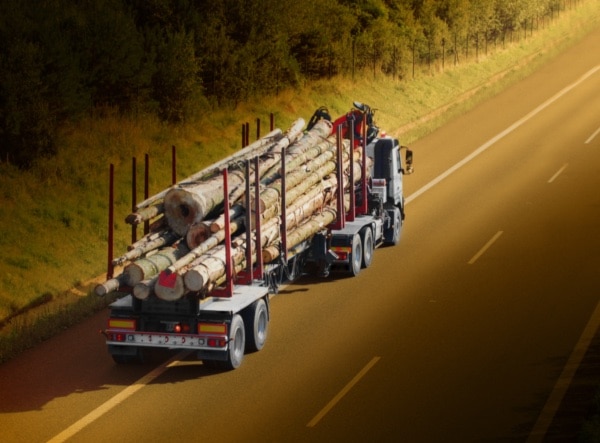
Tip #21: Make Sure That Your Cargo is Secure
Cargo is an important safety consideration and ensuring it is secure and in place is critical. Ensuring your cargo is secure is an FMCSA requirement and will help avoid accidents and injuries. If your load is not secure, it can brake loose and cause an accident or even worth, death. Check out our tips on cargo securement, as that takes a deeper dive into this important topic.
Tip #22: Consider a Dash Cam
The NTSB has long recommended that truck drivers use a dash cam. If you’re in a crash, these cameras can be invaluable in showing that you are driving safely and obeying traffic laws.
While some truckers consider cameras a privacy invasion, they’re becoming as regular sight in cabs as a navigational device.
A dash cam can also be a subtle reminder for you to follow these safety tips.
Tip #23: Park Safely
Parking involves backing up and changing angles. There are a lot of opportunities to inadvertently hit something and cause an accident.
You should try to park as far away from traffic and other drivers as possible, even if it means parking in the back of a parking lot. If you are parking overnight or for long periods, try to find a parking lot with security cameras if possible.
To ensure safety, you should try to scout delivery spots on foot ahead of time. Many delivery spots are even trickier to park in and can have hazards that are hard to notice from your cab.
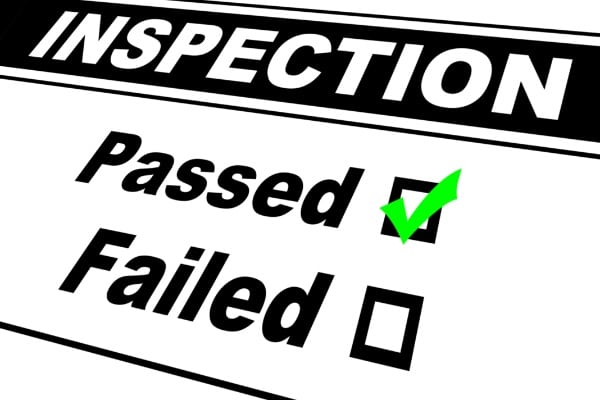
Tip #24: Complete Pre and Post-Trip Inspections
Pre and post-trip inspections by drivers are required by Federal Motor Carrier Safety Administration (FMCSA) regulations. They are the best way to stay on top of potential problems and avoid accidents caused by faulty equipment.
You should develop a routine for your inspections to ensure you don’t miss a step and make it easier to do the necessary paperwork.
Take your time when performing your inspection. An extra five minutes can mean spotting a deadly problem and preventing an accident.
Stay Safe in the Car — What Are 3 Safety Rules to Remember When Sharing the Road with Trucks?
No matter how much you love your truck, you still need to drive your car occasionally. Here are three rules to remember:
Stay out of a truck driver’s blind spot. If you can’t see the truck’s mirror, the driver can’t see you!
What are the safety rules for following a truck? Ensure you maintain a distance of 7-8 seconds behind the truck. A car takes about 300 feet to stop when going at 65 mph.
If you need to pass a truck, avoid an accident by never cutting off a semi.
Reduce Injuries for Truck Drivers by Staying on Top of Potential Hazards
From the weather to construction to traffic, a lot is out of your control as a truck driver. But you can ensure your vehicle is in good condition and that you drive safely.
Driving large vehicles like trucks will always have many hazards. Truck accidents can never be eliminated. But by following these truck driving safety tips, you can keep yourself and others safe.